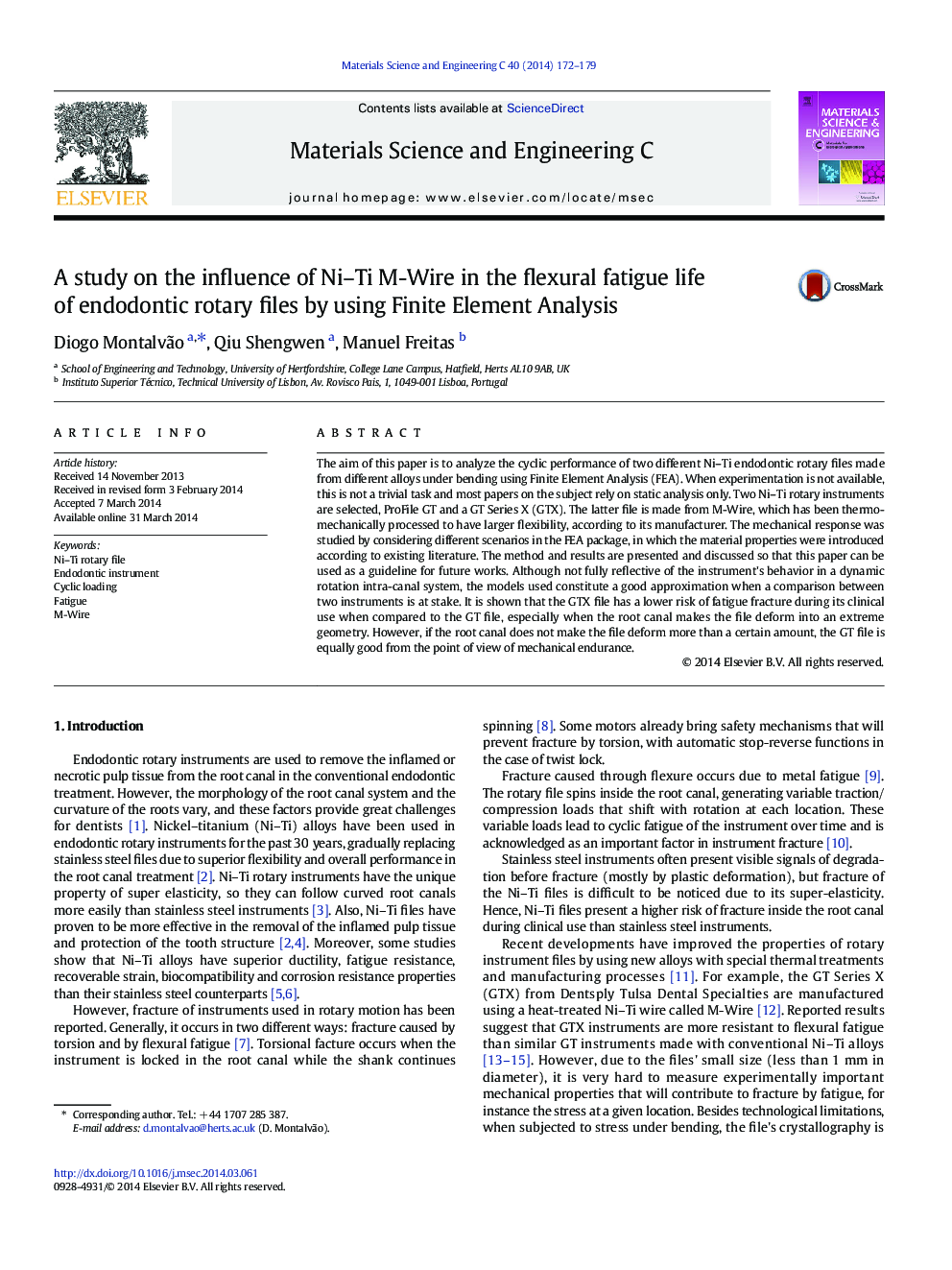| Article ID | Journal | Published Year | Pages | File Type |
|---|---|---|---|---|
| 1428329 | Materials Science and Engineering: C | 2014 | 8 Pages |
•The mechanical behavior of two NiTi endodontic files was studied using FEA.•The files have similar cross-sections, but are made from different alloys.•Tests show that files have different performances at room and body temperatures.•Tests show the validity of the models, even if some approximations have been made.•The fatigue lives have been estimated under standard load and boundary conditions.
The aim of this paper is to analyze the cyclic performance of two different Ni–Ti endodontic rotary files made from different alloys under bending using Finite Element Analysis (FEA). When experimentation is not available, this is not a trivial task and most papers on the subject rely on static analysis only. Two Ni–Ti rotary instruments are selected, ProFile GT and a GT Series X (GTX). The latter file is made from M-Wire, which has been thermo-mechanically processed to have larger flexibility, according to its manufacturer. The mechanical response was studied by considering different scenarios in the FEA package, in which the material properties were introduced according to existing literature. The method and results are presented and discussed so that this paper can be used as a guideline for future works. Although not fully reflective of the instrument's behavior in a dynamic rotation intra-canal system, the models used constitute a good approximation when a comparison between two instruments is at stake. It is shown that the GTX file has a lower risk of fatigue fracture during its clinical use when compared to the GT file, especially when the root canal makes the file deform into an extreme geometry. However, if the root canal does not make the file deform more than a certain amount, the GT file is equally good from the point of view of mechanical endurance.
